9 Organic Mulch Options for the Vegetable Garden
You’re already convinced that mulching is essential for the vegetable garden. But as a gardener who wants to choose organic inputs whenever possible, what kind of mulch options should you consider?
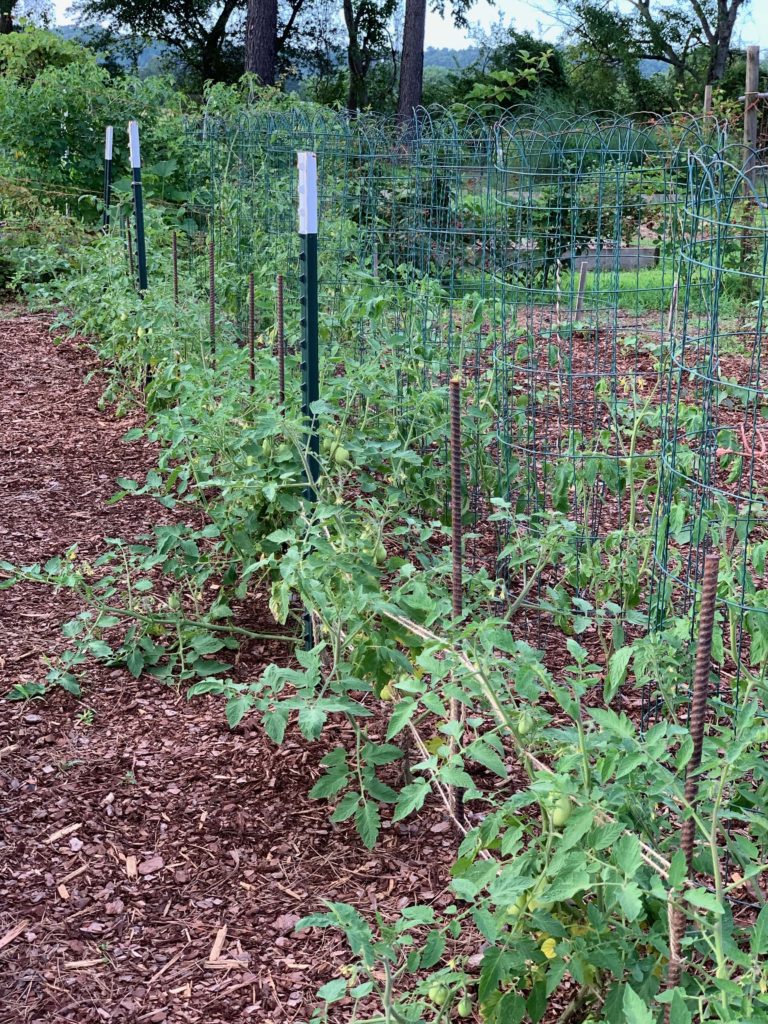
Several years ago, I wrote an article about 4 mulches for the vegetable garden — each of which I had used myself to a limited degree. Since then, I’ve learned that not only are there more options, but also one of the ones I formerly recommended ended up poisoning my garden. Certainly, we do need to be careful when we choose mulch for our edible gardens!
If you do any type of research on organic mulches for vegetable gardens, you will likely find conflicting information — even among reputable sources such as universities and cooperative extension websites. (I know I did when I researched for this article!)
Although I’ve done my best to provide the most up-to-date information, including my own experience of the past many years, if you have any questions or concerns about any of these methods, be sure and do your own research before covering your garden.
With all that out of the way, let’s explore 9 organic mulch options for the vegetable garden. You can listen to the podcast episode below or continue reading the article.
9 Types of Organic Mulch
Wood Chips and Bark Mulch
Confession — wood chips are my mulch of choice and have been since I began my garden in 2013. Each year I cover my entire garden with more, and each year my garden produces more and more.
But what I didn’t realize until recently is that there is a difference between wood chips and bark mulch. Wood chips are what you typically get in bulk from a local tree trimming service — many times for free if they are in your area.
Wood chips are mostly carbon but also add a bit of nitrogen if the leaves of the trees are included (also known as “arborist wood chips”). These leaves help balance out the carbon-nitrogen ratio to a very limited degree and provide a bit more nutrients as they break down into your garden soil.
Bark Mulch is a commercial product using specific trees, mostly products of the milling industry. This is what you typically see in your local garden store. Bark mulch won’t have the nitrogen inputs that arborist wood chips have.
Do wood chips tie up nitrogen in the soil?
With both wood chips and bark mulch, you do have to be careful adding these to your soil — always lay them on top and never work them into the soil. As the wood breaks down into the soil, it temporarily takes nitrogen that your plants need. (You might hear this referenced as “robbing the soil of nitrogen.”) Contrary to what was previously thought, leaving wood chips or bark mulch on top of the soil won’t tie up nitrogen near the plant roots beneath the soil. This nitrogen tie-up will only happen where the wood chips come in contact with the soil and not where the plants take up nitrogen a few inches beneath.
As the wood chips break down at soil level, they will stabilize and become a beneficial ingredient to the soil structure itself. This is why you can start out with four inches of wood chips at the beginning of the season and at the end of the season, you only have a fraction of visible wood chips. Beneath this thin layer, you’ll find healthier soil, built in part from the decomposition of the wood chips. I’ve seen this over the course of the years in my garden.
But this caution bears repeating: wood chip mulch works great as long as you only lay it on the top; never till it into the soil.
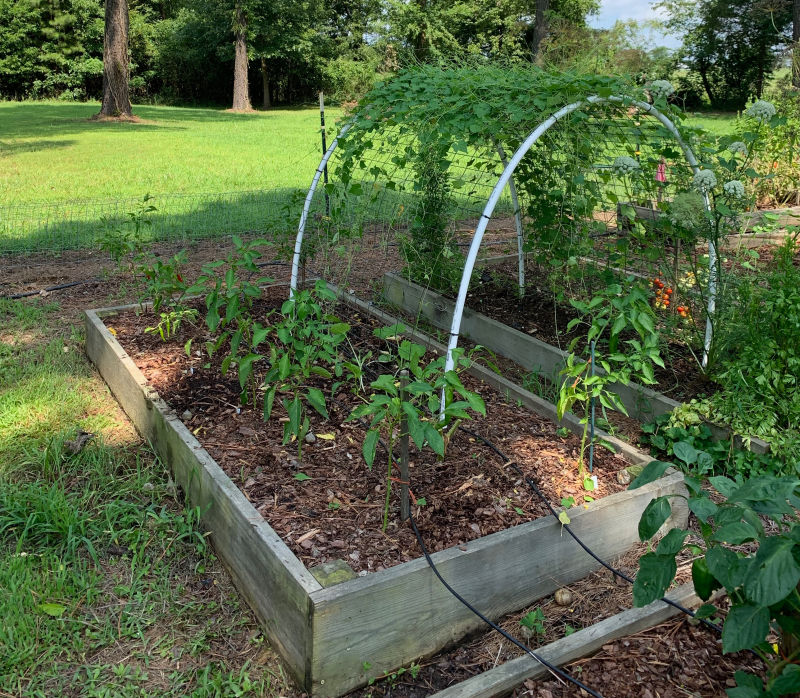
Do you need to let wood chips rest before using?
You may hear recommendations to let wood chips rest before you put them on your garden. True, letting wood chips “rest” will give them time to stabilize in their breaking down process. But I will tell you that I’ve never done this when I get wood chips or bark mulch each season. My garden hasn’t suffered, and I haven’t seen a difference between my crops mulched with fresh wood chips compared to ones I use from a pile that has rested for a year.
If you buy bagged bark mulch at your local garden center, this isn’t a concern. Those are more than likely to have already been aged so you don’t have to worry about the rest period anyway.
What other cautions should we know about wood chip mulch?
It’s important not to use the dyed bark mulch (as we so often see) as there are concerns about the dye leaching into the soil and your vegetables (not to mention the wood used in those dyed mulches is questionable).
The one downside to bark mulch I’ve seen is that squash bugs like to take shelter in the mulch, so you may have more of those than normal.
Also, because you never want to work wood chips or bark into the soil, it can be a pain to have to rake these back in your garden each season to plant. (If you do, the video below shows you how, and it’s really not that big of a deal.)
Straw
I occasionally use straw in my garden to mulch. It’s great at retaining moisture, it’s easy to apply, it’s readily available in most areas, and you don’t have to worry about herbicide contamination.
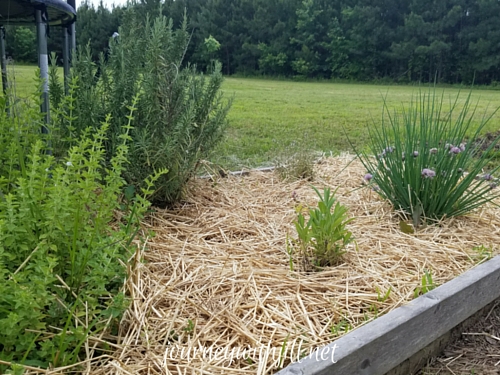
One of the biggest drawbacks to straw is that it’s a byproduct of wheat and other grains and because of this, there can be seeds leftover. This can lead to extra weeds, which is one of the reasons we add mulch in the first place! It’s also not as nutrient-dense for your soil when it breaks down.
Because it’s light, you have to apply it on a still day where there’s little wind. You do need a very thick layer of it for it to offer optimum weed prevention.
Compost
My second choice for mulching my garden is applying weed-free, seed-free compost. Hear me when I say that I would never apply my homemade compost as mulch. Why? If you’ve been with me long, you know that I am a lazy composter, and I don’t worry about getting my compost hot enough to kill any seeds/weeds. That means that my homemade compost, while extremely nutritious for my soil, is also a haven for ready-to-sprout seeds.
Instead, the compost that I use for mulch, I buy from my local landscaping company by the cubic yard, and I love using it as mulch.
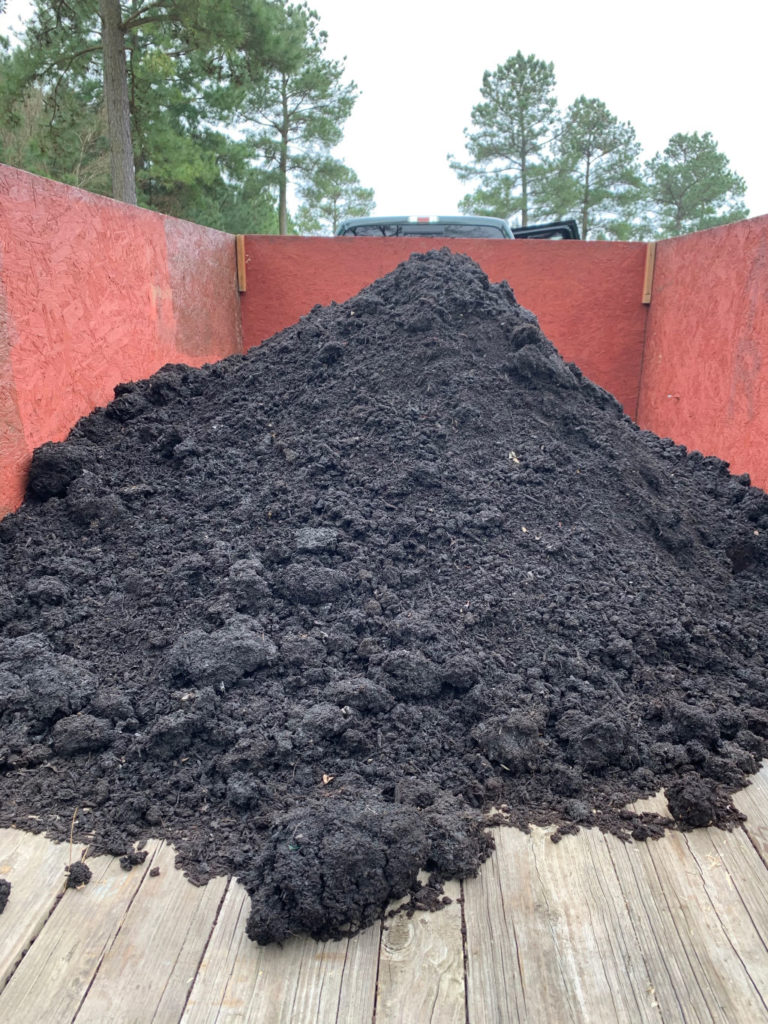
High-quality, weed-free compost feeds your soil almost immediately (as opposed to other types of mulch needing to break down). You don’t have to worry about it robbing any nutrients if you decide to work it into the soil later. It also warms up quickly in the spring, which is a big plus.
The only negative that I would have to say about using compost as mulch is that it’s much more expensive than other sources and because it’s compost, it’s the perfect place for blowing seeds to take root. Your weeds will pop up not from underneath, but from on top. Still, those few weed sprouts are typically manageable, especially in a small garden like a raised bed.
Pine Needles (or pine straw)
The benefits and drawbacks of pine needles are one and the same. Pine needles decompose very slowly. This is great if you want to use it in your walkways or in a place that you don’t need it to break down quickly. But, it can take years to decompose so don’t put them in your garden thinking they will be broken down by the next season.
Contrary to previous thought, pine needles that have fallen from trees do not acidify the soil. (Fresh ones might.) I will tell you that my garden started out with a pH below 5, and after liming my soil for a year or two, my soil tests consistently continue to show pH in the proper 6.0-6.5 range, despite pine needles covering my garden each fall.
If you’re like me and have a plethora of pine needles near you, don’t be afraid to use this free source as mulch.

Shredded Leaves
This source of mulching is relatively new to me. I have a single deciduous tree in my yard and so I don’t have the leaves like so many do. However, my dad brought me bags of his leaves last fall. I shredded them with a leaf shredder, but you can mow them if you have a bagger attachment to collect the shredded leaves.
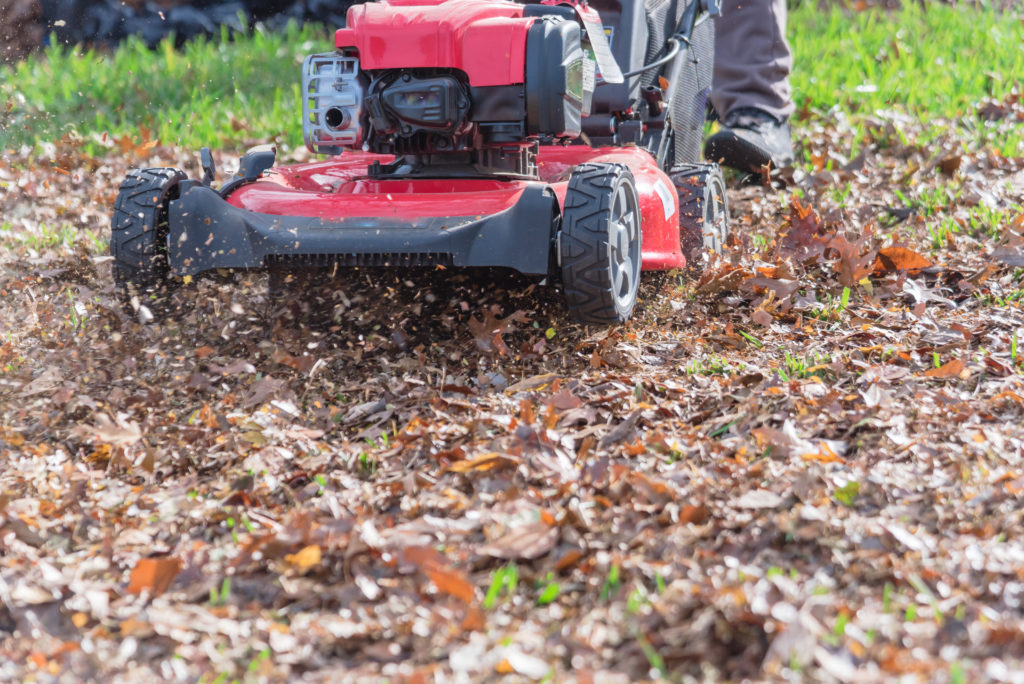
Shredded leaves, rich in nutrients, are fantastic at feeding your soil, especially when applied in the fall. They add to proper soil structure, tilth, and drainage — important elements to healthy soil. Some sources say that, unlike wood chips, you can turn these into the soil in the spring, but I plan to keep mine on top just in case.
Grass Clippings
What about grass clippings from your lawn?
We have a mulching lawnmower so our class clippings are returned back into the yard. But if you have a bagger on your mower, you can collect the grass and use it as mulch. But, your grass MUST be untreated grass. You don’t want to add any chemicals to your garden. Think of it this way — if it kills the weeds in your lawn, it’ll harm the veggies in your garden.
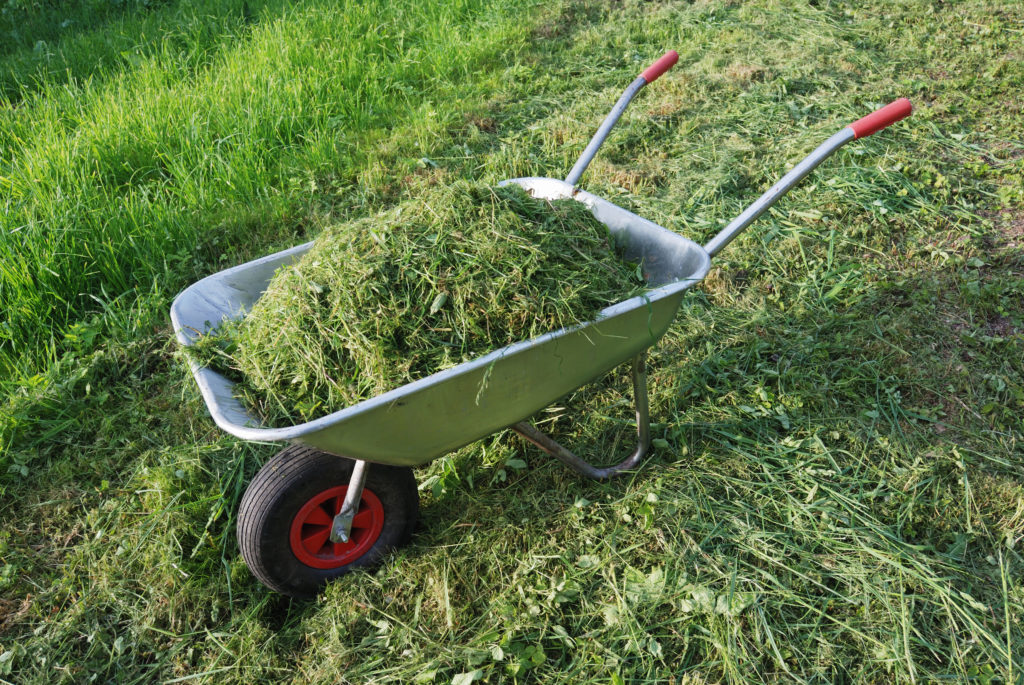
You also want to make sure you dry out your grass clippings before you spread them onto your garden. Just lay them on a tarp in the sun to dry out. If you use fresh grass clippings, you could end up with a matted mess that will repel water rather than allow it to percolate. It can also mold.
Another perk to grass clippings is that you don’t have to have as much (just a few inches will suffice), and it will also add nutrients and organic matter to your soil.
Hay
Finally, let’s talk about hay. I used hay for a couple of seasons in my garden as mulch and had no issues. In fact, it covered the garden well and offered good weed prevention. Hay also offers more nutrients to the soil than straw, so as it breaks down it benefits the garden.
Then, I bought hay that ended up being treated with aminopyralid. I had used it to mulch to — thankfully — only one row of tomatoes. A few weeks later, my tomato leaves started to look curled in an unnatural way.
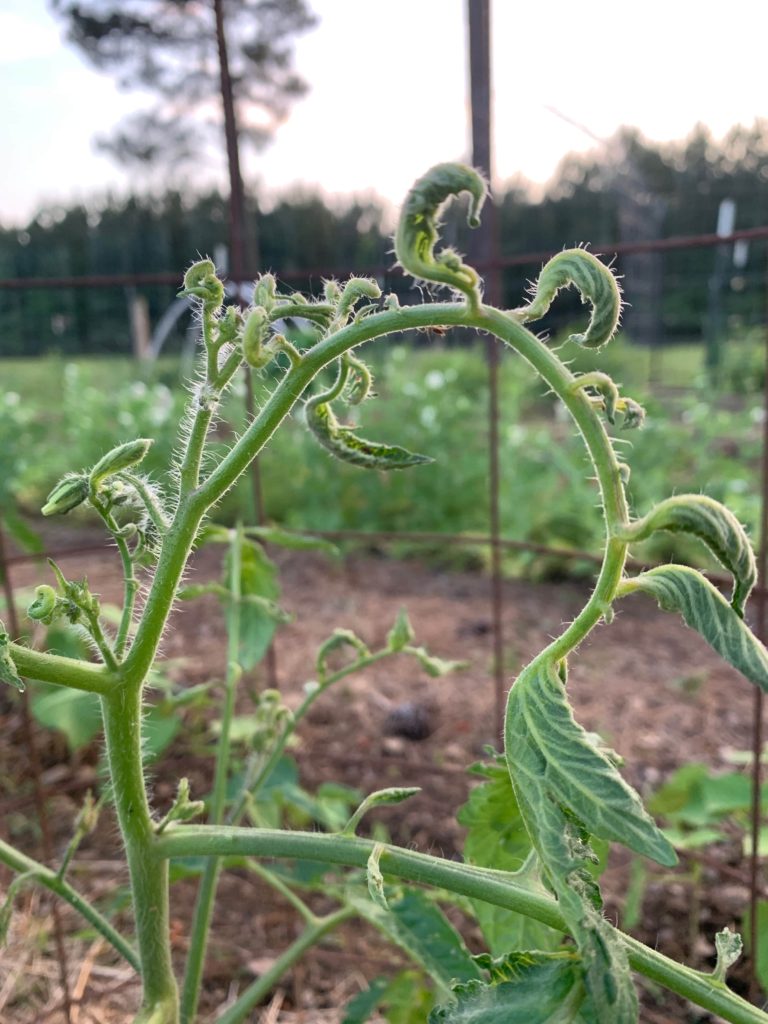
I did some research and learned that the hay had most likely been treated with an herbicide. This is a broadleaf weed killer used on a commercial scale. It’s sprayed onto grass fields so that when the hay is harvested, it leaves grass to be cut and not the weeds. (Maybe that’s why hay didn’t add seeds to my garden like I hear it has done for others?)
Thankfully, I caught it early enough and I was able to remove it. Even though my harvest was stunted that year, I was able to get some tomatoes.
Because of this terrible experience (I’m just thankful I didn’t mulch my entire garden with hay!), I swore never to use hay again unless it’s guaranteed organic. So please make sure if you do, you do extra research.
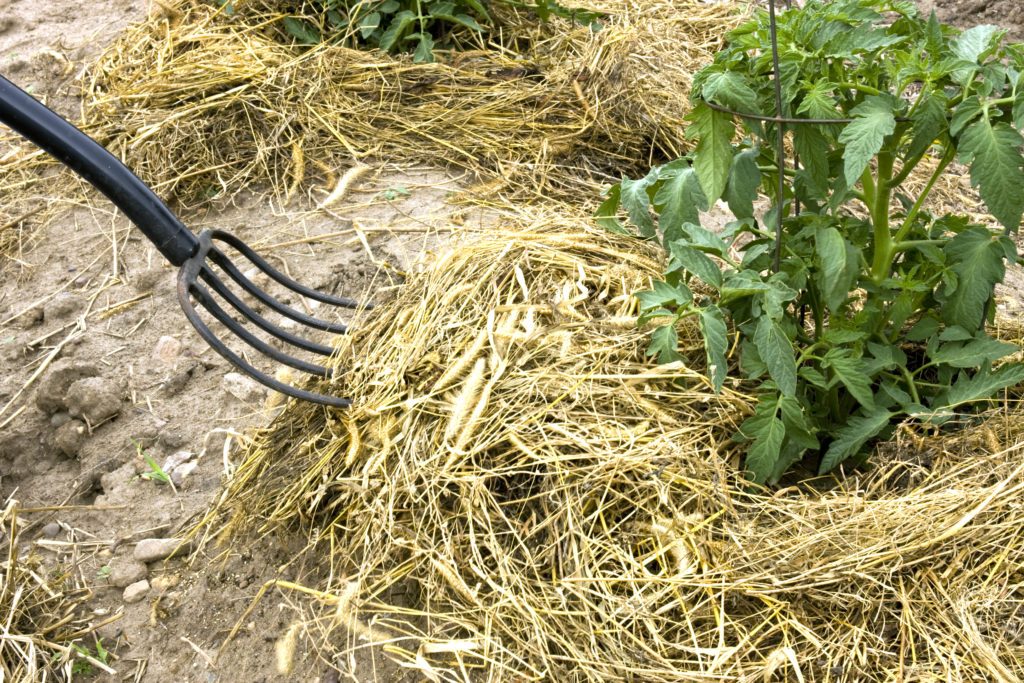
Hopefully, this article has given you some ideas as to what type of mulch may be best for you. But the important thing is to choose one (or more) and use it. Your garden, and your harvest, will thank you!

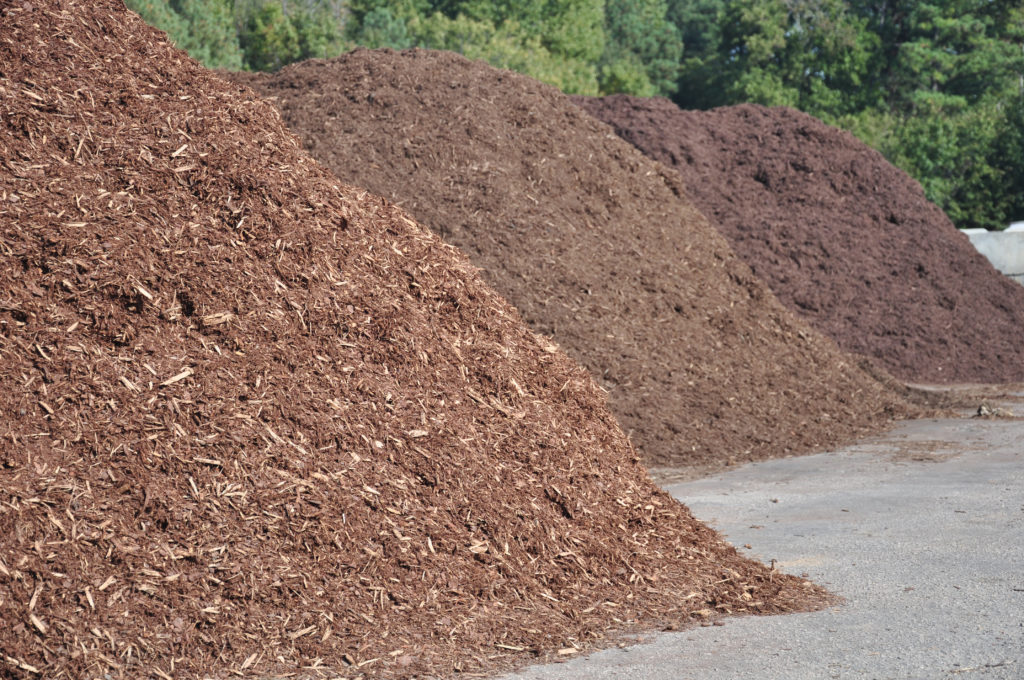
Interesting article. Glad that I have not tilled in the bark mulch as I never gave it any thought about doing what you said in your article. I use pine needles often as I have free access to over 20 pine trees on my property that provide more needles than I ever will need.
If you live in a cooler climate, wait until after your first freeze to apply your fall mulch. Otherwise you will give many pests a nice warm place to hibernate and pop up again next year.
Thanks – interesting list. Similar to Chris’ comment, I am in a colder area and found mulching raised beds too early meant kale didn’t grow — in hindsight, I think the soil needed more time to warm up. The light-colored straw I used kept the soil too cool. I’ve used hay I bought from a horse farmer — she’s not certified organic, but when I asked her about spraying she was horrified at the thought as she feeds her own horses with it. Hasn’t caused weeds. This year I am waiting longer and using seaweed, maybe over untreated paper. Also leaving the cover-crops in place til I can plant the warm crops. So many options.
Interesting article, thanks for writing it. I’ve been looking for a mulch for a the veggie garden’s of some of my client’s. Living in the Interior of BC Canada a high concern is wildfires. Wondering what you would suggest given many gardens are not far from houses.
I don’t have personal experience with that. Of all the ones I mentioned in the article, I’d assume finished compost and wood chip mulch (kept irrigated) would be the least flammable. But I’m only guessing. I have had issues with termites when using arborist wood chips near my home, though, so I’d caution about that. Bark mulch hasn’t been a problem for me, though.
What about saw dust for mulch??
I would avoid using it around plants. It’s less likely to just sit on top of the soil and more likely to pilfer down and tie up nitrogen where you need it. I apply it between my raised beds where I don’t want anything growing, and you’d be amazed how well that works to prevent weeds and growth where I don’t want it — which also cautions me about using it near places I do want growth.
I will be planting my seeds outside this spring. Do I mulch around the new seedlings after they pop up???
I usually wait until they are about 6″ high, but yes.
was wondering if this mulch would cause problems with Blue Berry Bushes? Coffee grounds, mixed with Egg Shells and Banana Peels (fully broken down). I use it on Rose Bushes and other flowering Bushes, but haven’t tried it on food products. Thanks for any imput!
I don’t see any problem with that at all on blueberries.
Hi Jill. Great article on mulch. I have just laid out 6 raised garden beds. From the ground I built up the beds with the following:- cardboard, small logs/branches, fresh wood chip, more broken up cardboard, more fresh wood chip (50mm thick), then 300mm of garden mix. I am now concerned about the 2nd layer of 50mm layer of wood chip robbing nitrogen from the garden mix. Should I counterbalance any future problem and use coffee grounds, fish emulsion, grass clippings as a mulch? Here in New Zealand we have an amazing product called MBL (Majic Botanic Liquid) which has falvic acid and humates which should help the roots out and I’ll keep using this in the interim.